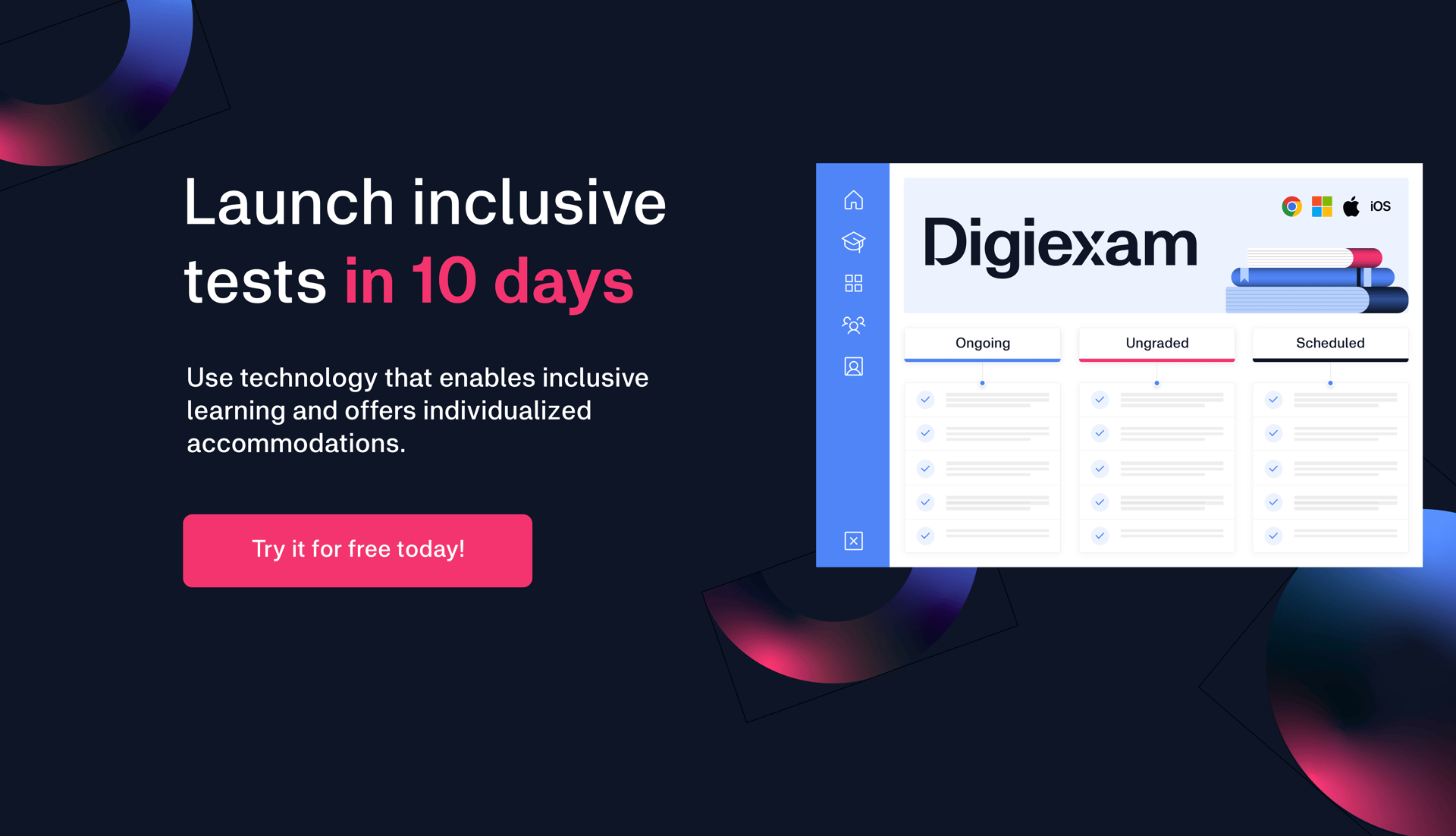Over 14% of K-12 students in the United States benefit from special education services under the IDEA framework (National Center for Education Statistics, 2021). As Technology leaders, your role in seamlessly integrating technology to provide equitable testing accommodations is crucial for enabling every student's success.
Understanding Testing Accommodations
Testing accommodations adjust standard procedures to provide all learners with equitable opportunities during assessments. These modifications are vital for students who face barriers that could unfairly impact their performance. With the advent of new technologies, educators are now equipped to tailor these accommodations with precision, ensuring every student's needs are met without compromising the validity of the evaluation.
Technology's role in this sphere is transformative, offering solutions such as adjustable timers for students requiring more time, and digital platforms that present test questions in multiple accessible formats. This not only levels the playing field but also bolsters students' confidence as they can engage with tests in a way that best suits their individual learning styles.
Embracing these advancements, we can foster a truly inclusive environment that judiciously evaluates each student's knowledge and skills, while upholding the integrity of the educational experience.
Enhanced Testing Accommodations through Technology
- Extended Time: Implementing software for managing and monitoring extended time effectively.
- Alternative Formats: Utilizing digital tools to offer content in various formats, such as audio.
- Assistive Technology: Incorporating technologies like screen readers, text-to-speech software, and adaptive devices.
Try Digiexam for free
Legal Framework and Regulations
The legal framework for testing accommodations in K-12 education primarily revolves around the Individuals with Disabilities Education Act (IDEA). IDEA requires that schools provide individualized accommodations to support the unique educational needs of students with disabilities. Alongside IDEA, the Americans with Disabilities Act (ADA) plays a critical role. ADA prohibits discrimination based on disability and mandates reasonable accommodations in educational settings, ensuring accessibility for all students.
To effectively navigate these legal requirements:
- IDEA Compliance: Familiarize yourself with IDEA's mandates, focusing on how your school can tailor accommodations to meet the distinct needs of each student with a disability. While IDEA mandates specific accommodations in public schools, the principles of providing equitable education and the use of technology for accommodations are broadly applicable and reflect best practices in education.
- ADA Standards: Ensure that all technology procured and implemented for testing accommodations adheres to the ADA’s accessibility standards. This includes making sure that educational software, hardware, and digital content are accessible to all students.
- Stay Informed of Changes: Regularly consult resources from the U.S. Department of Education, the local Independent Association, or the Office for Civil Rights (OCR) to stay updated on the latest policies, legal updates, and best practices in educational technology and disability accommodations.
- Professional Development: Prioritize professional development programs that specifically address the convergence of legal mandates, technological advancements, and testing accommodations. This will help in building a knowledgeable team capable of effectively implementing and managing these accommodations.
- Collaborative Policy Review: Engage in ongoing collaboration with legal experts, special education professionals, and school administrators to review and refine your school's policies and practices surrounding testing accommodations. This ensures that your approach remains legally compliant and effectively meets the needs of your students.
By maintaining a proactive stance in understanding and applying these legal guidelines, Technology and ICT Directors can ensure that their schools provide an equitable and inclusive learning environment for all students, aligned with federal regulations.
Financial Aspects: Cost Analysis and Budgeting
Investing in technology for testing accommodations is an investment in student success. Consider the initial costs of acquiring new technology and the ongoing expenses for maintenance and training. Balance these against the long-term benefits, such as enhanced educational outcomes and compliance with legal mandates.
- Initial Costs: Consider the initial investment in purchasing hardware, software, and training materials.
- Ongoing Expenses: Factor in maintenance, software updates, and ongoing staff training.
- Cost-Benefit Analysis: Weigh the long-term benefits of improved educational outcomes against the initial and ongoing costs.
Funding Sources and Grants
- Federal and State Grants (public schools): Explore opportunities for grants under the IDEA Part B and other state-specific educational technology grants.
- Private Funding and Donations (public & independent schools): Seek partnerships with tech companies or private donors interested in supporting inclusive education initiatives.
Uniting Technology and Inclusive Education
The journey toward an inclusive educational ecosystem is ongoing. As leaders in technology, you are tasked with ensuring that every student has the necessary tools to succeed. Engage in dialogue within your schools, strategize the implementation of technology, and take proactive steps toward creating environments where all students have equal opportunities to excel.
References:
National Center for Education Statistics (2021). "Students with Disabilities."
U.S. Department of Education. "Individuals with Disabilities Education Act (IDEA)."
